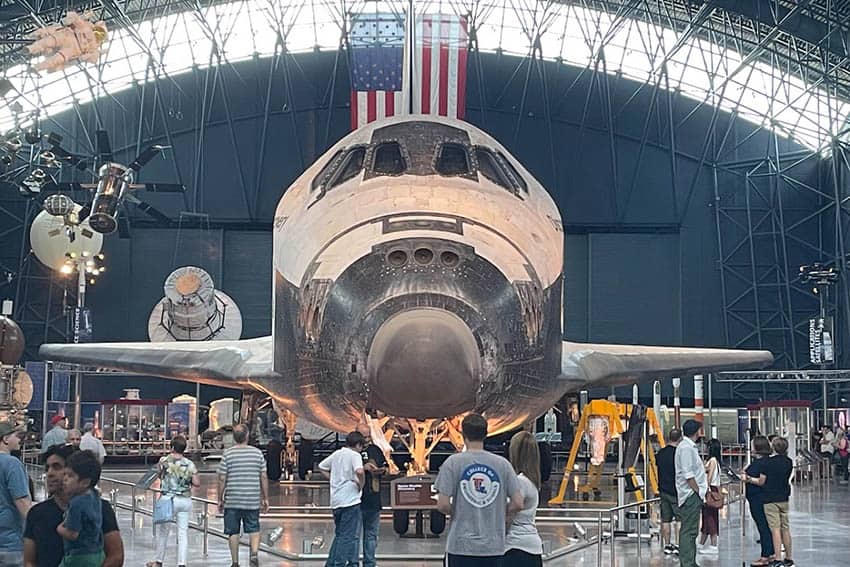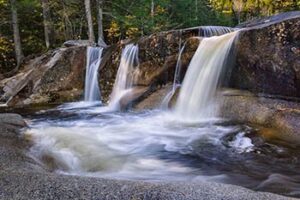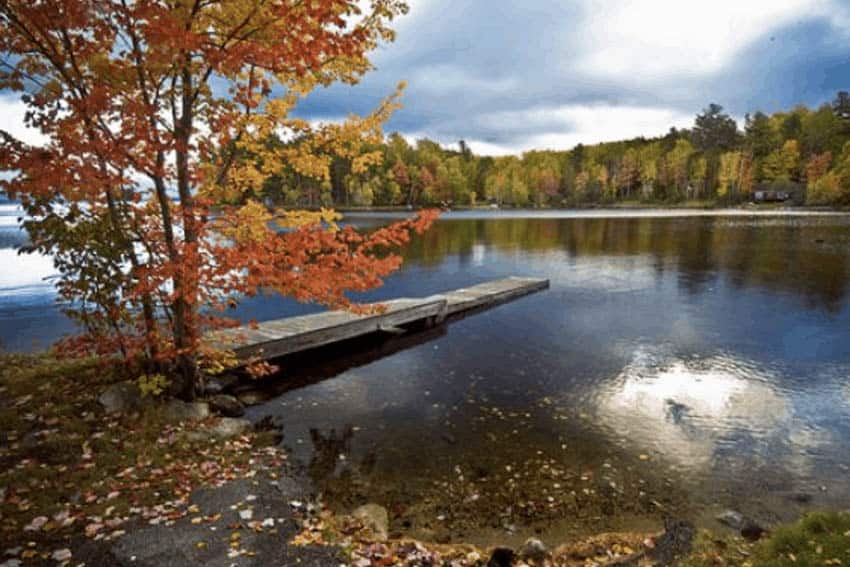
Washington, D.C. with Teens: Beyond the Mall and Monuments
By Kirsten W. Larson

U.S. Capitol? Been there. White House? Done that. For years, Washington, D.C. has been a popular middle school-trip destination. That means lots of tweens and teens have visited before — including mine.
When we scheduled a repeat trip to Washington, D.C. with our boys, the last thing I wanted was eye rolls, exaggerated sighs, and stifled yawns. It was time for the teen twist on the nation’s capital.
Forming a plan
With only 3 and a half days, we couldn’t do everything, so I imposed some limits. I aimed for two sites per day, factoring in time for eating (did I mention these are teen boys!) and transiting between sites. I also left room to stumble upon unexpected sites that piqued our interest.
We wouldn’t start too early; nothing is worse than sleep-deprived teens. And most nights I wanted to give the boys a couple of hours of downtime after a full day of enforced family togetherness.
With all this in mind, I asked my teens to pitch in on the planning, giving me their top two tourist sites. My parents, also along for the ride, said they’d do whatever we had planned.
When my husband and I added our picks, the resulting list was a mostly off-the-beaten path itinerary.
Most of the sites required reserving timed tickets in advance, even if the tickets were free. I booked right away. This was a big change from our last, pre-COVID visit, when only the hottest new museums, like the National Museum of African American History and Culture, required timed tickets.
At home at Mount Vernon

We arrived in Washington, D.C. from my parents’ house in Virginia on a warm, but not sweltering August day.
Our first stop was Mt. Vernon, George Washington’s beloved home 17 miles south of Washington D.C. on the banks of the Potomac River.
With its expansive views overlooking the river, it was no surprise Washington spent his days in the nation’s capital longing for home.
Though we’d been to Mount Vernon before, the education center was new and improved since our last visit. It now boasted a 4D Revolutionary War movie and an interactive “Be Washington” game.
The war movie put our family on the battle lines with falling “snow” and seats that rumbled with cannon fire. The “Be Washington” game let our teens try their hand at presidential decision-making.
As tensions rose during the Whiskey Rebellion, they had to weigh advice and decide whether to send in federal troops to quell the rebellion.
The 30-minute mansion tour itself was brief and underwhelming Still our teens enjoyed walking the grounds, including the blacksmith shop, slave quarters, slave gravesite, and 16-sided barn. website
Room for all with an airbnb
When traveling with teens, it pays to have space to spread out. That’s why we often prefer suites, apartments, or airbnbs.
For this trip, we situated ourselves near a Metro stop. Washington, D.C. is known for traffic snarls, difficult driving conditions, and scant parking.
We found a three-bedroom home in the Lyon Park neighborhood of Arlington, about a 10-minute walk from the Clarendon Metro Station. I made sure there was a driveway so we could park our cars for the duration.

Another upside to renting a house: having our own kitchen meant we could save on meals out too.
We picked up breakfast and dinner supplies at a nearby Trader Joe’s and planned to eat lunch out while touring the city.
That worked well since many sites don’t allow you to bring in food beyond a few snacks and bottled water.
Smart Travel with Metro
After we settled in and ate dinner, we were off to The Kennedy Center for “The Play That Goes Wrong.”
The theater was just three stops away by Metro rail. We bought our WMATA SmarTrip cards at the station and loaded them with a 3-day pass unlimited pass covering both trains and buses.
For those staying longer, 7-day and monthly passes are available too, or you can just periodically reload your card at the station.
The Kennedy Center, with its Instagram post-worthy views of the Potomac, was a big hit with the kids, as was the comedy.
With 2,000 shows a year, The Kennedy Center has something for everyone. Check to see what’s on here.
One of our teens forgot to pack long pants, which wasn’t problem. The dress code was casual even at an 8 p.m. show.

Snapping Insta-worthy shots

In one of our few nods to traditional travel itineraries, we toured the Washington Monument, a request from our 14-year-old budding photographer.
Towering over the town, the Monument stands over 555 feet tall, making it the “the world’s tallest freestanding stone structure,” as the National Park Service’s tongue-in-cheek video told us.
It had been the world’s tallest man-made structure, but it was soon surpassed by the Eiffel Tour in Paris. No matter, the Monument offers Instagram-worthy views in four directions. Our teens spent several minutes snapping photos. website
On our walk to our next stop – Ford’s Theater – we discovered the site of the World War I Memorial. This is the type of serendipitous experience it’s easy to have when you aren’t rushed and can walk around D.C.
There’s a monument or memorial on practically every corner. We also stopped off at one of our favorite food stops, District Taco, to fuel up. The local chain offers customizable tacos, burritos, bowls, salads, and quesadillas. website
Chasing a killer
Our 14-year-old had devoured the book, CHASING LINCOLN’S KILLER by James L. Swanson in middle school, so Ford’s Theatre was high on his list.
We paid $5 each for the audio tour, which took us through the small museum and into the theater itself, where we could see the presidential box.
Across the street, we toured the Petersen House where Lincoln died and learned about his final hours. The house is filled with reproduction furnishings, since the real bed where Lincoln died is at the Chicago History Museum.
Though geared for younger kids, our 14-year-old happily completed the National Park Service Junior Ranger activity booklet and received a Jr. Ranger Badge.
The grandparents said Ford’s Theatre was their favorite stop. Between the museum, theatre, and house, we spent nearly three hours there. website

I, Spy Museum

Our final stop of the day was the International Spy Museum. I saved this site for last since it’s open both earlier and later than most of the others.
The museum has relocated to new home near the L’Enfant Plaza Metro station, a custom-designed for its collection of spy artifacts and its immersive spy experience.
As we entered the gallery, we each answered a few questions and were given a secret spy identity, a mission and code word.
I was Peyton Castro, a Canadian visiting professor sent to London to track down a list of clients buying stolen nuclear technology.
Working our way through the exhibits, we used our code words to check in at kiosks where we cracked codes, spotted threats, and created disguises related to our mission.
The museum is highly interactive. Our teens enjoyed detecting lies during simulated interrogations, solving puzzles, sneaking through air ducts, and hanging from a construction crane.
We stayed three hours, until the museum closed at 7 p.m., but could have stayed longer. Website
A need for speed
Our 16-year-old lobbied to visit his favorite Smithsonian Air & Space Museum on the National Mall. The galleries are currently undergoing a major renovation through 2025 and half of them remained closed.
We were still able to see the 1903 Wright Flyer in the new “Wright Brothers & the Invention of The Aerial Age” exhibit.
Meanwhile, we spotted Lindbergh’s Spirit of St. Louis tucked away around a corner on the second floor. The new “Destination Moon” exhibit included Neil Armh3’s space suite and the command module, Columbia. website

Still, we moved through the museum a lot faster than I’d planned. That left us plenty of time to munch on mouth-watering gyros from one of the many food trucks parked just outside the museum. This was the teens’ favorite food experience.

Outside art
With extra time before our next scheduled stop, we wandered the National Gallery of Art’s outdoor sculpture garden. The teens eagerly snapped shots of pieces like Robert Indiana’s “Amor” and Tony Smith’s “Moondog” for their Instagrams, as people lounged and lunched around the central fountain. website
Cell Phone: Unseen Connections

We polled the teens about where to spend the next hour. They opted for the National Museum of Natural History, where we found the permanent galleries crowded and noisy with summer campers.
We found a quieter, special exhibit upstairs. “Cell Phone: Unseen Connections,” open through 2026, introduced our teens to the origins of their favorite device, including the people, materials, and technologies that make their cell phones possible. Website
Generally, special exhibits at major museums can offer more peace and quiet. Most tourists want to see the collection highlights and skip these.
National treasure
“National Treasure” was a popular movie with our teens, which meant the National Archives Museum was on the agenda.
The Archives’ Rotunda, which displays copies of the U.S. Constitution, the Bill of Rights, and the Declaration of Independence was packed.
Security guards encouraged us to move quickly through the room, making for a frustrating experience.
The teens spent the most time in “Records of Rights,” an interactive permanent exhibit, allowing them to explore how generations of Americans have fought to fulfill the rights and freedoms promised by the founding documents.
On screens, they swiped and scrolled through primary source documents on subjects like the Civil Rights Movement, history of indigenous people, Women’s rights and LGBTQ rights. This was a far more enjoyable experience than the Rotunda, making the visit worth it. website

We finished up mid-afternoon, buying overpriced ice cream cones from a food truck outside. With nothing else planned, we licked our drippy treats, and then speed-walked to the U.S. Holocaust Memorial Museum for a quick tour of the permanent exhibition.
There, the boys lingered on black and white photos and videos of the Nuremberg Laws and their impact, the war itself, and even a full-scale model of one of the death camps. website
After the museum closed, a summer rainstorm scuttled our plans to visit a few other memorials the 14-year-old wanted to photograph. We called it a day and Metroed home, sopping wet. An umbrella for summer storms would definitely have come in handy.

Space Shuttle mania
Far better than the Air & Space Museum on the Mall was the Smithsonian’s Udvar-Hazy Center near Dulles International Airport. We drove there on the way to catch our flight, stowing our carry-on luggage in free lockers at the museum.
We spent the entire day with Space Shuttle Discovery; the Enola Gay, the first plane to drop an atomic bomb; a Concorde airliner; and the hypersonic SR-71 Blackbird plane.

My parents left us midafternoon to drive home, so we grabbed space-themed shakes at the museum’s Shake Shack and took an Uber to Dulles International Airport. The easy drive was no more than 10 minutes. website
Traveling with teens doesn’t have to be a chore. As long as you keep them fed, give them downtime, and a let them have some control over the travel plans, traveling with teens can open a window into their world. And a trip may be one of the few times you can convince them to come out of their bedrooms.
 Kirsten W. Larson is a children’s book children’s book author, speaker, and writing coach located in Southern California. She’s published more than 30 nonfiction children’s books on everything from animal zombies to the history of Wonder Woman and the CIA. Travel is her favorite source of story ideas. Learn more at KirstenWLarson.com or connect with her on Twitter or Instagram @kirstenwlarson.
Kirsten W. Larson is a children’s book children’s book author, speaker, and writing coach located in Southern California. She’s published more than 30 nonfiction children’s books on everything from animal zombies to the history of Wonder Woman and the CIA. Travel is her favorite source of story ideas. Learn more at KirstenWLarson.com or connect with her on Twitter or Instagram @kirstenwlarson.
- Shhh, Keep Quiet About Queretaro - September 30, 2024
- Wroclaw Poland: A City Full of Dwarfs - September 25, 2024
- Hoi An–A City Frozen in Time - September 19, 2024





